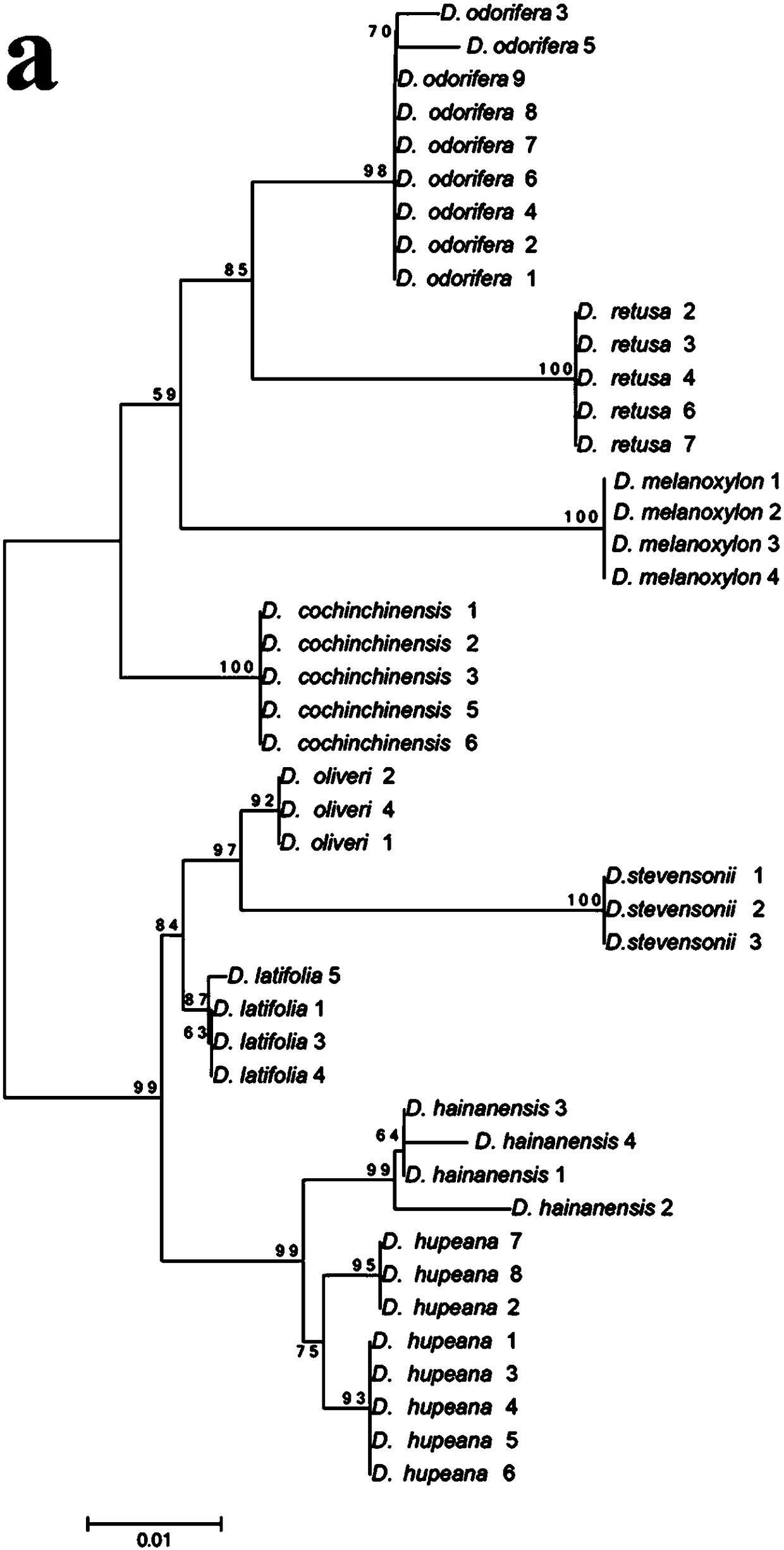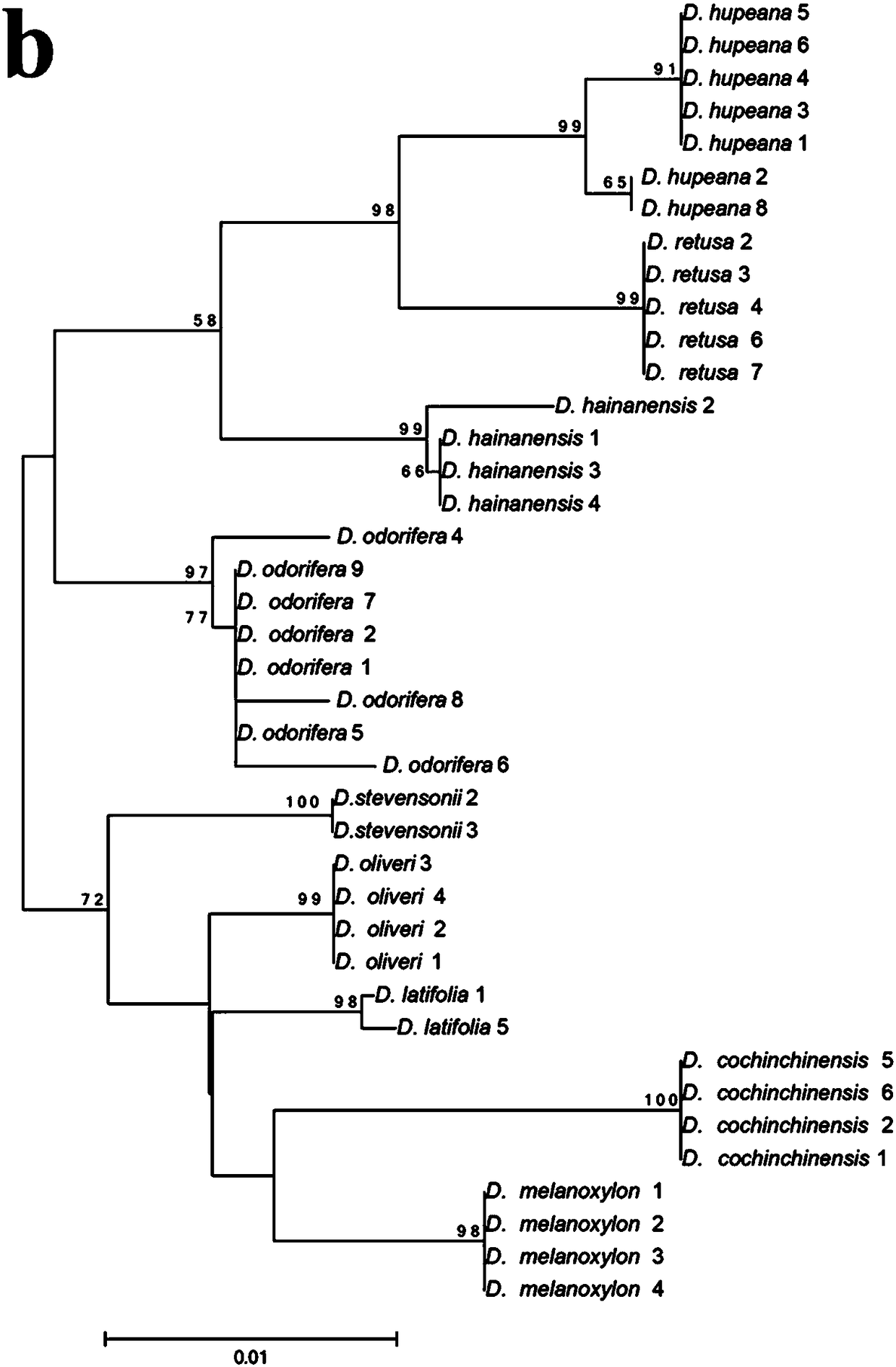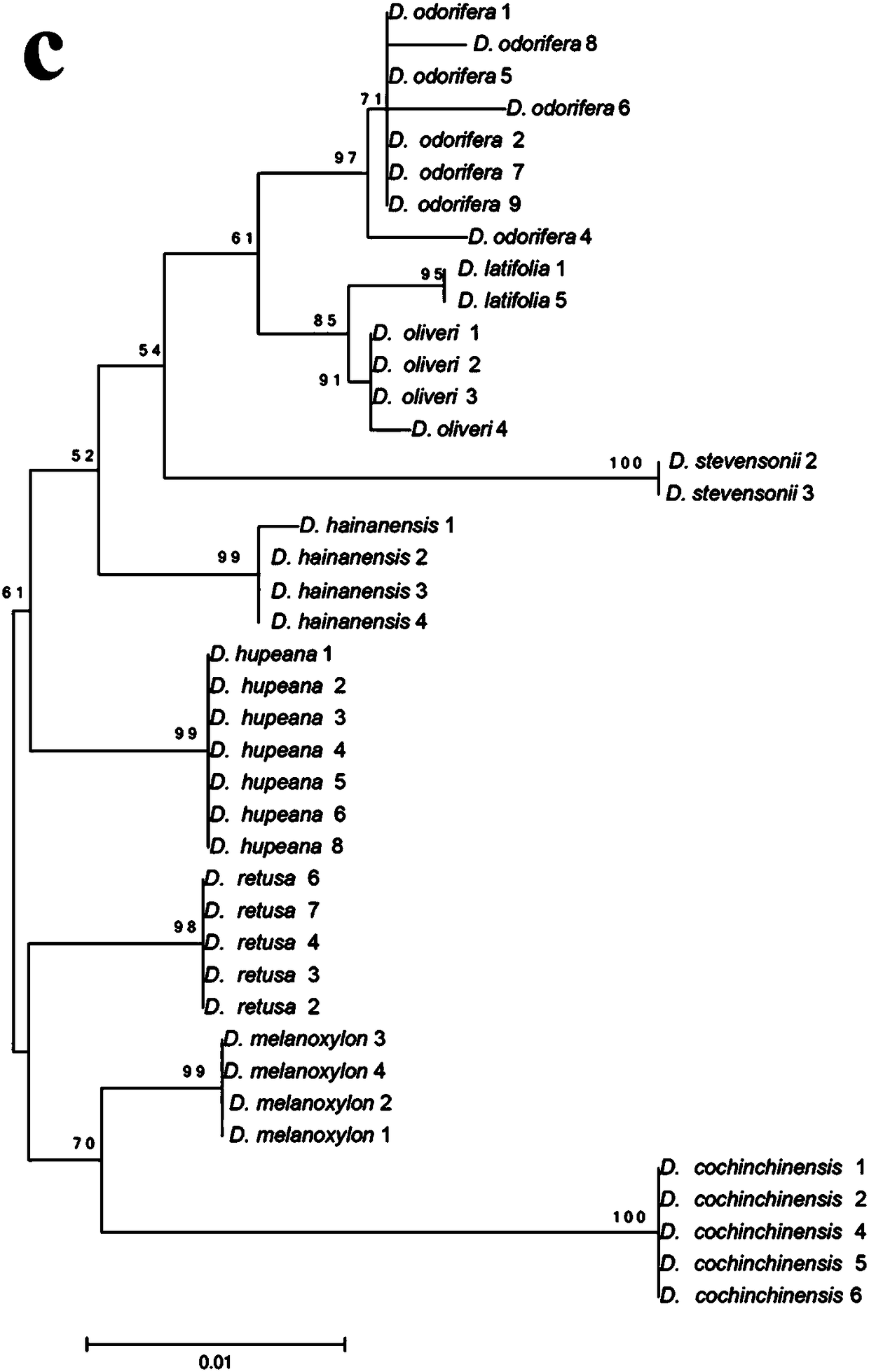A kind of dna combined barcode for identifying 9 kinds of Dalbergia wood and its identification method and application
A technology of Dalbergia and barcoding, applied in the field of DNA combination barcoding and identification thereof, can solve the problem of inability to accurately identify 9 species of Dalbergia wood, and achieve the effects of less dependence on experimental conditions, less sampling amount, and simple operation.
- Summary
- Abstract
- Description
- Claims
- Application Information
AI Technical Summary
Problems solved by technology
Method used
Image
Examples
Embodiment 1
[0044] Example 1: Dalbergia species wood-specific primer design
[0045] (1) Download the chloroplast DNA sequence trnL, trnH-psbA, trnV-trnM and nuclear DNA sequence ITS2 (Table 1) of Dalbergia from GenBank;
[0046] Table 1 Dalbergia DNA barcode sequences downloaded from GenBank
[0047]
[0048]
[0049]
[0050] (2) Using Clustal X 1.81 software to compare the sequences, find and determine the difference sites of the four DNA barcode sequences among Dalbergia;
[0051] (3) The Primer Premier 5 software was used to design primers for trnL, trnH-psbA, trnV-trnM and ITS2 barcodes. The primers were synthesized by Shanghai Bioengineering Co., Ltd., and the sequences of the primers are shown in Table 2.
[0052] Table 2 Information of four kinds of DNA barcode primers
[0053]
[0054]
Embodiment 2
[0055] Example 2: Optimization and determination of DNA combined barcodes of 9 kinds of Dalbergia wood standard samples
[0056] (1) Standard sample collection
[0057] Nine standard samples of Dalbergia genus (respectively Dalbergia Dalbergia, Dalbergia, Hainan Dalbergia, Cochinate Dalbergia, Broad-leaved Dalbergia, East African Dalbergia, Osmanthus Dalbergia, Dalbergia dentata and Belize Dalbergia ), a total of 50 specimens were obtained from the Timber Herbarium of the Chinese Academy of Forestry.
[0058] (2) Sample preparation
[0059] Select a wood sample, use a 70% alcohol-sterilized scalpel blade to cut off the outer surface of the wood sample to avoid external pollution; cut the wood sample into several sawdust, and place it in a low-temperature freezer grinder for 3 minutes at low temperature, and grind 3min, operating frequency 10cps; after grinding, pass through a 200-mesh sieve, divide the fine wood powder into several 50mL microcentrifuge tubes, each tube conta...
Embodiment 3
[0084] Embodiment 3: unknown wood sample DNA identification
[0085] (1) The wood samples came from the wood market. Through the identification of its anatomical structure, it was determined that it belonged to Siamese rosewood wood, but the species could not be identified.
[0086] (2) Prepare wood flour and grind it to 200 mesh or above.
[0087] (3) Wood DNA extraction.
[0088] In a sterilized ultra-clean working environment, use the DNA extraction kit in Example 2 to extract DNA from wood. The DNA still needs to be purified, and the final concentration of the DNA is 1-200 ng / μL.
[0089] (4) PCR amplification reaction and sequencing.
[0090] The above-mentioned wood DNA is used as a template for PCR amplification, and the amplification primers are shown in SEQ ID NO: 1-4. The PCR amplification reaction system is 30 μL: Premix Ex Taq 15 μL (including 1.25U Ex Taq DNA polymerase, 2mM MgCl 2 , 200 μM single dNTP), 0.2 μM single primer and about 20 ng template DNA.
[...
PUM
 Login to view more
Login to view more Abstract
Description
Claims
Application Information
 Login to view more
Login to view more - R&D Engineer
- R&D Manager
- IP Professional
- Industry Leading Data Capabilities
- Powerful AI technology
- Patent DNA Extraction
Browse by: Latest US Patents, China's latest patents, Technical Efficacy Thesaurus, Application Domain, Technology Topic.
© 2024 PatSnap. All rights reserved.Legal|Privacy policy|Modern Slavery Act Transparency Statement|Sitemap



